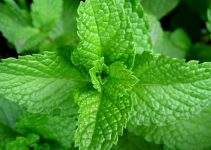LUJII Hummingbird Feeders for Outdoors, Hand Blown Glass, Never Fade, 36 Fluid Ounces, 5 Feeding Stations, Much Bigger, Garden Backyard Decorative, Containing Ant Moat (Red)
19% OffO2COOL Deluxe Handheld Battery Powered Water Misting Fan (Dark Blue)
47% Off15 Indoor Plants That Are Drought Tolerant
Caring for houseplants can seem daunting, especially when it comes to watering. Different plants have different watering needs, and it’s easy to overwater or underwater. However, some indoor plants are actually quite drought tolerant and can withstand periods of neglect.
This article covers 15 low-maintenance indoor plants that do not require frequent watering. I’ll overview their key traits, growing conditions, and tips for keeping them alive when you inevitably forget to water! Opt for these hardy, drought-resistant plants if you want beautiful indoor greenery without the fussy care.
What Does Drought Tolerant Mean?
Drought tolerant or drought resistant plants are those that can go extended periods of time without water and still thrive. They have physical and physiological adaptations enabling them to conserve moisture in hot, dry conditions that would wilt most other plants.
Physical drought adaptations:
- Thick, waxy leaves or needles that prevent water loss
- Fleshy leaves, stems or trunks that store water internally
- Hairs or scales on leaves to shade surfaces and slow evaporation
- Extensive root systems maximize water absorption from soil
Physiological adaptations:
- Close stomata on leaves to prevent internal moisture loss
- Special pores for gas exchange remain closed during daytime
- Reduce growth rate and metabolic activity under drought stress
- Increase production of natural sugars or anti-oxidants that allow cells to retain more water
Next, we’ll look at 15 common indoor plant varieties that have these drought adaptations. They can handle stretching out the period between deep waterings longer than other houseplants.
1. Snake Plant (Sansevieria)

The snake plant, also often called mother-in-law’s tongue or sansevieria, is famously resilient and drought tolerant. Just one reason it ranks as one of the top air purifying indoor plants.
Native to arid tropical regions, it has adapted thick, waxy leaves that prevent moisture loss. The stiff, pointed leaves can photosynthesize efficiently even with little water available. Snake plants also grow slowly, needing less fuel and water than faster growing varieties.
Growing Conditions:
- Bright to low indirect light
- Average room temperatures
- Water every 2-3 weeks
Tips for Care:
- Allow soil to dry out between waterings
- Use well-draining potting mix
- Dust leaves occasionally
2. ZZ Plant (Zamioculcas zamiifolia)
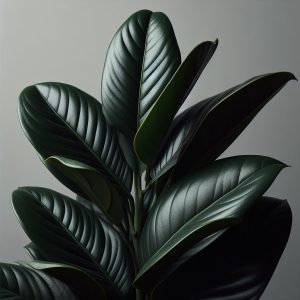
Another extremely drought resistant option perfect for beginners is the ornamental ZZ plant. It possesses very thick underground tubers that can hold moisture for weeks. Fat, potato-like rhizomes allow ZZ plants to survive prolonged neglect.
Growing Conditions:
- Bright indirect light to low light
- Prefers warm temperatures
- Water every 3-4 weeks
Care Tips:
- Tolerates drought and slightly dry air
- Well-draining soil prevents overwatering
- Dust glossy leaves to keep them looking pristine
3. Ponytail Palm (Beaucarnea recurvata)
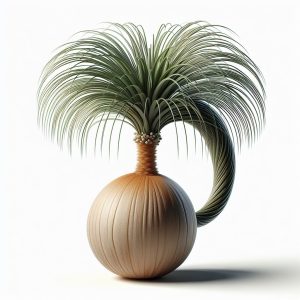
The ponytail palm is not a true palm but a succulent-like evergreen plant. As a drought adapted tree native to eastern Mexico, it has a bulbous trunk that stores water much like a camel’s hump! The swollen base and slow growth habit allows it to cope with infrequent watering.
Growing Conditions:
- Bright indirect light
- Average to warm indoor temperatures
- Water every 3-4 weeks
Care Tips:
- Perfect for bright, warm atriums
- Allow soil to fully dry out before next watering
- Mist leaves occasionally
4. Pothos (Epipremnum aureum)
An incredibly versatile indoor plant, pothos or devil’s ivy handles missed waterings with aplomb. It has waxy leaves to retain moisture. And as naturally occurring vining plants, pothos focus energy on foliage over roots making them less water dependent than other houseplants.
Growing Conditions:
- Low to bright indirect light
- Average room temperatures
- Water every 2-3 weeks
Care Tips:
- Tolerates all lighting conditions
- Prune overgrown trailing vines
- Wipe dust off leaves periodically
5. Chinese Evergreen (Aglaonema)
Chinese evergreen is a lush, ornamental flowering plant. But unlike many flowering varieties requiring diligent watering, the Chinese evergreen has adapted to store water and energy in fleshy roots and stems. This gives it flexibility to handle periods of drought.
Growing Conditions:
- Low to medium indirect light
- Average room temperatures
- Water every 2-3 weeks
Care Tips:
- Tolerates low humidity well
- Shake plants gently to distribute moisture in soil
- Remove old flower stems and dying leaves
6. Cast Iron Plant (Aspidistra elatior)
The cast iron plant well deserves its name – it seems able to survive almost anywhere with minimal care once established. Large paddle-shaped leaves have a waxy cuticle that allows the aspdiistra plant to lock in moisture even under dry indoor conditions.
Growing Conditions:
- Low to bright indirect light
- Average room temperatures
- Water every 3-4 weeks
Care Tips:
- Keep away from cold drafts and vents
- Tolerates dark corners and moisture fluctuations
- Wipe dust off broad shiny leaves
7. Orchid Cactus (Epiphyllum oxypetalum)
Part of the wider orchid cactus group, this plant is more closely related to desert cacti than showy orchids. Its knobby, triangle-shaped stems can store large reserves of water. The Epiphyllum oxypetalum also has slightly succulent leaves that close chambers at night to prevent moisture escaping.
Growing Conditions:
- Bright indirect sunlight
- Average day and slightly cooler night temperatures
- Water every 2-3 weeks
Care Tips:
- Mist leaves occasionally to supplement humidity
- Let soil dry completely between waterings
- Provide support sticks/stakes for vertical stems
| Plant Variety | Key Traits | Average Watering Frequency |
|---|---|---|
| Snake Plant | Thick waxy leaves, slow growing | Every 2-3 weeks |
| ZZ Plant | Fat water-storing tubers underground | Every 3-4 weeks |
| Ponytail Palm | Bulbous trunk stores water like camel hump | Every 3-4 weeks |
| Pothos | Vining leaves focus moisture and energy | Every 2-3 weeks |
| Chinese Evergreen | Stores water and energy underground in fleshy roots and stems | Every 2-3 weeks |
8. Ghost Plant (Graptopetalum paraguayense)
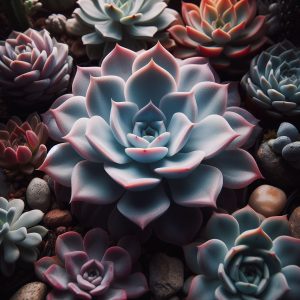
The ghost plant is aptly named – it looks like a cluster of pale spooky flowers. But what makes it thrive as a houseplant is fleshy, low-growing rosettes adapted to store water during droughts. Tiny hairs also cover its succulent-like leaves, helping reflect sunlight and prevent evaporation.
Growing Conditions:
- Bright indirect sunlight
- Average room temperatures
- Water every 2-3 weeks
Care Tips:
- Tolerate full sun but colors fade without proper lighting
- Ensure container has holes for drainage
- Limit fertilizer which encourages growth over water storage
9. Jade Plant (Crassula ovata)
Jade plants originally hail from the arid climates of South Africa. Stout woody stems and oval-shaped succulent leaves equip it to withstand very dry conditions. Leaves and stems swell with stored water like miniature water balloons!
Growing Conditions:
- Bright location with some direct sun
- Average room temperatures
- Water every 2-3 weeks
Care Tips:
- Allow soil to fully dry before rewatering
- Trim leggy growth to force bushy habit
- Dust fleshy leaves periodically
10. Spider Plant (Chlorophytum comosum)
Don’t overwater the spider plant! It develops tiny plantlets with baby white roots allowing it to uptake moisture from the air. Small but mighty, the spider plant has earned its popularity as a resilient indoor darling.
Growing Conditions:
- Bright indirect sunlight
- Average room temperatures
- Water every 1-2 weeks
Care Tips:
- Tolerant of most lighting conditions
- Trim brown leaf tips caused by salt buildup
- Wipe leaves down to prevent dust buildup
11. Haworthia
This charming little succulent has a rosette of pointed leaves packed with chlorophyll to harness light for photosynthesis and growth. Avoid overwatering, as Haworthias store extra water in their strappy leaves. Varieties like the Zebra Haworthia
Growing Conditions:
- Bright indirect sunlight
- Average room temperatures
- Water every 2-3 weeks
Care Tips:
- Cactus/succulent soil provides drainage
- Tolerates some direct sunlight
- Protect from frost
12. Purple Heart (Tradescantia pallida)
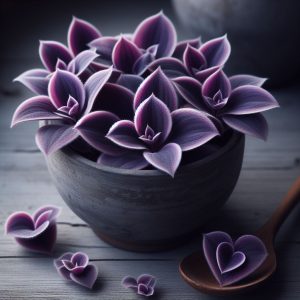
Sometimes called purple queen, this relative of wandering jew is a stunning houseplant thanks to vivid purple foliage. Oval leaves have a protective wax coating and the ability to curl up and preserve moisture content when subjected to drought.
Growing Conditions:
- Bright indirect sunlight
- Average room temperatures
- Water when top inch of soil is dry
Care Tips:
- Pinch back to encourage thick growth
- Repot when rootbound
- Wipe leaves down to prevent dust buildup
13. Lucky Bamboo (Dracaena sanderiana)
Despite its name, lucky bamboo is not a true bamboo but rather a resilient member of the dracaena genus. It has reedy stems covered with narrow lanceolate leaves that hold water efficiently. Plus the plants grow slowly, needing less fuel and moisture.
Growing Conditions:
- Low to bright indirect sunlight
- Average room temperatures
- Water weekly but allow soil to partly dry
Care Tips:
- Mist leaves frequently with soft water
- Rotate plant occasionally for even vertical growth
14. Air Plants (Tillandsia)
Air plants soak moisture and nutrients directly through their specialized leaves so many can thrive mounted without soil altogether. Even when potted, they need much less frequent watering than common houseplants. Just mist air plants when the color fades.
Growing Conditions:
- Bright filtered sunlight
- Average to warm temperatures
- Water every 1-3 weeks
Care Tips:
- Soak plants for 1-4 hours once a week
- Unique options for mounting without soil
- Ensure good airflow
15. Aloe Vera
Aloe plants flourish in hot, dry environments with their signature fleshy spear-shaped leaves acting like moisture reservoirs. The gel inside has healing properties but the plant also filters indoor pollutants like formaldehyde making it one of the best air purifiers.
Growing Conditions:
- Bright indirect sunlight
- Warm temperatures
- Water when soil is fully dry
Care Tips:
- Requires excellent drainage
- Limit repotting that can damage root ball
- Mist leaves occasionally
| Plant Variety | Key Traits | Average Watering Frequency |
|---|---|---|
| Ghost Plant | Pale succulent leaves adapted to store excess water | Every 2-3 weeks |
| Jade Plant | Swollen woody stems and leaves | Every 2-3 weeks |
| Spider Plant | Grows tiny plantlets with roots to absorb moisture | Every 1-2 weeks |
| Haworthia | Strappy leaves can swell with excess water | Every 2-3 weeks |
Remember when caring for any houseplant that too much water can be detrimental. Prioritize well-draining soil, drainage holes at the base of pots, and waiting until the top inch is dry before watering again.
Following this rule of thumb and choosing low-maintenance options from this list will ensure you can enjoy lush indoor plants without worrying about drought tolerance.
Final Thoughts
As you can see, many common indoor plants actually prefer periods of drought or uneven watering over continually wet soil. Adaptations like swollen water-storing leaves, waxy cuticles, hairy leaf coatings and extensive root structures allow them to tap moisture as needed.
So when building your indoor garden oasis, make sure to incorporate several of these hardy, drought resistant varieties into the mix! Choosing plants with different growth habits, light and soil preferences will make your plant care regimen easier plus create visual interest.
The 15 drought tolerant options overviewed here are perfect for the habitual plant neglecter. And even if you are diligent about watering, these plants tend to reward hands-off care instead. So take it easy and let your drought resistant green companions do the work! Their resilience will add welcome tranquility rather than worry to your indoor gardening endeavors.



























